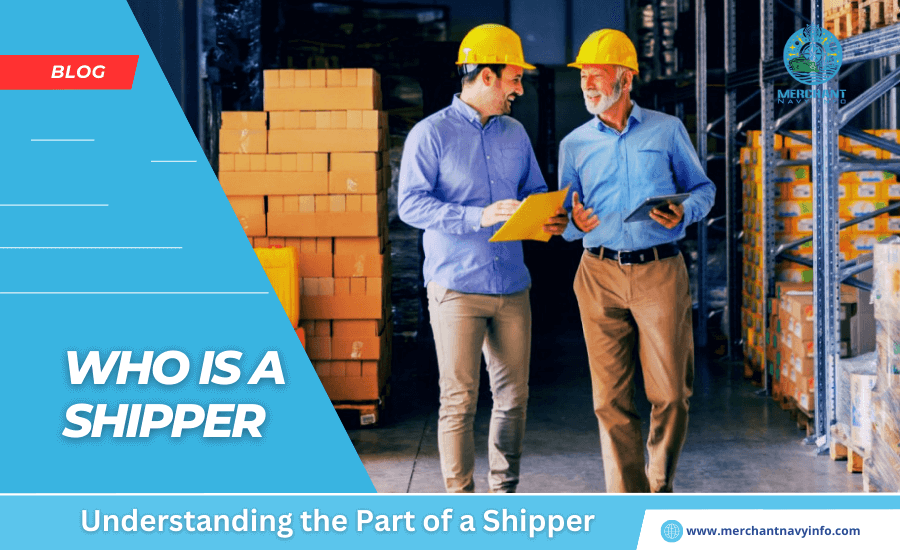
1. Understanding the Part of a Shipper
Shipper are irreplaceable substances inside the supply chain biological system. Serving as orchestrators of the complex move of merchandise from their focus of beginning to their last goals. They work as the nexus point between producers, providers, carriers, and conclusion clients. Guaranteeing a consistent stream of items through the whole shipping handle. Shippers are entrusted with a bunch of duties, counting stock administration, transportation coordinations, fetched optimization, and client benefits. They must have a sharp understanding of different shipping strategies, carrier capabilities, and administrative prerequisites. And showcase flow to explore the complexities of worldwide exchange effectively.
2. Sorts of Shippers
Commercial Shippers
These entities are businesses locked in within the generation, dissemination, or deal of products on a huge scale. They handle shipping as a necessary portion of their operations. And regularly keep up devoted coordination divisions to supervise the method.
Cargo Forwarders
Acting as mediators between shippers and carriers. Cargo forwarders specialize in orchestrating the transportation of products for the sake of people or businesses. They use their ability to optimize shipping courses, arrange favorable rates, and oversee documentation and traditions clearance.
Person Shippers
Whereas not working at the scale of commercial substances, person shippers play a critical part in the shipping scene. They include customers sending bundles to adored ones, business visionaries shipping items for little businesses, and online dealers satisfying orders for clients.
3. Duties of a Shipper
Shippers shoulder a different cluster of duties all through the shipping handle. They handle a lot of this at a time some of them are mentioned below:
Bundling
Shippers must meticulously bundle merchandise to resist the rigors of transportation, utilizing suitable materials and strategies to protect against harm.
Documentation
Completing exact and comprehensive documentation is basic for administrative compliance and the clearance of productive traditions, requiring fastidious consideration of detail and adherence to significant laws and directions.
Carrier Determination
Assessing and selecting carriers based on different criteria, such as shipping speed, unwavering quality, cost-effectiveness, geographic scope, and specialization in handling specific sorts of cargo.
Rate Arrangement
Arranging favorable cargo rates and legally binding terms with carriers to optimize shipping costs while keeping up benefit quality and unwavering quality.
Following and Communication
Check the development of shipments in real-time, give convenient upgrades to partners, and instantly tend to any issues or concerns that emerge amid travel.
Claims Administration
Dealing with claims for misplaced, harmed, or deferred shipments, facilitating determination with carriers, and guaranteeing convenient stipends or determinations for influenced parties.
4. Steps Included in Shipping
The shipping handle arrangement of steps includes many different functions and different abilities to do certain things:
Arranging
Assessing shipping necessities, counting the nature of merchandise, bundling needs, goals, and timeline to create a comprehensive shipping procedure.
Arrangement
Obtaining fundamental bundling materials, completing documentation, creating shipping names, and planning pickup or drop-off coordination.
Execution
Managing the stacking and celerity of shipments, guaranteeing compliance with bundling and documentation prerequisites, and starting travel with chosen carriers.
Monitoring
Utilizing the following frameworks and communication channels to screen the advance of shipments in travel, proactively recognizing and tending to any potential issues or delays.
Delivery
Facilitating the convenient entry of shipments at their assigned goals, planning with beneficiaries or consignees for acknowledgment, and confirming fruitful conveyance and receipt.
Follow-Up
Conducting post-shipment assessments, gathering criticism from partners, and actualizing remedial activities or preparing advancements are essential to improve future shipping operations.
5. Utilizing Shipping Administrations
Shipper have a broad cluster of shipping administrations and assets, enveloping:
Postal Administrations
National and universal postal administrations offer a range of shipping choices, from standard divide conveyance to assisted or specialized administrations custom-fitted to particular needs.
Freight Carriers
Cargo carriers give comprehensive transportation arrangements for bulk shipments, advertising alternatives for full truckload (FTL) and less-than-truckload (LTL), and discuss cargo, sea cargo, and intermodal transport.
Coordinations Suppliers
Third-party coordination (3PL) suppliers offer coordinate coordination arrangements, counting warehousing, stock administration, fulfillment, and transportation coordination, catering to the different needs of shippers over businesses.
Shipping Program
Advanced shipping program stages engage shippers with instruments for rate comparison, name era, shipment following, and execution analytics, streamlining shipping forms and improving effectiveness.
6. Lawful and Regulatory Considerations
Compliance with legitimate and administrative prerequisites is fundamental for shipper to explore the complexities of universal exchange and transportation viably:
Traditions Controls
Shippers must follow traditional directions in administering the consequence and sending out products, counting tax classifications, valuation, documentation prerequisites, and compliance with exchange understandings and sanctions administrations.
Perilous Materials Directions
Handling and shipping perilous materials require strict adherence to administrative systems administering classification, bundling, labelling, documentation, and transportation modes, guaranteeing the secure and compliant transport of perilous products.
Industry Benchmarks
Shippers must comply with industry-specific standards and certifications, administering viewpoints such as cargo security, temperature-controlled shipping, taking care of perishable merchandise, and quality management frameworks to meet client desires and administrative commands.
7. Persistent Change
Grasping a culture of persistent enhancement empowers shippers to adjust to advancing showcase flow, optimize operational effectiveness, and improve client fulfillment:
Handle Optimization
Analyzing shipping workflows, recognizing bottlenecks, and implementing handle changes to streamline operations, decrease costs, and upgrade throughput.
Innovation Selection
Leveraging progressed advances such as robotization, information analytics, fake insights, and blockchain to enhance visibility, traceability, and proficiency over the shipping lifecycle.
Execution Measurements
Building up key execution markers (KPIs) and measurements to screen shipping execution, track patterns, and recognize regions for change, cultivating data-driven decision-making and persistent optimization.
Collaboration and Advancement
Locks in with industry accomplices, partners, and innovation suppliers to cultivate collaboration, trade best hones, and drive development in shipping processes, guaranteeing arrangement with rising patterns, advances, and client inclinations.
By fastidiously executing each step and grasping a commitment to persistent change, shippers can explore the complexities of the shipping scene, optimize operational execution, and deliver exceptional esteem to clients and partners alike.










